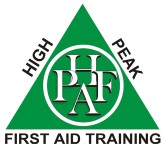At high altitudes, the atmosphere contains less oxygen due to lower air pressure. The human body has to adapt to this decreased availability of oxygen, which can lead to a range of physiological responses and challenges. The higher you go, the more pronounced these effects become. Here’s a step-by-step breakdown of what happens as you ascend:
- Reduced Oxygen Availability:
- As you climb higher, atmospheric pressure decreases, which means that every breath contains fewer oxygen molecules. For example, at 3,500 meters (around 11,500 feet), the oxygen level is about 60% of what it is at sea level.
- Increased Breathing Rate (Hyperventilation):
- The body’s immediate response is to breathe faster and deeper to compensate for the reduced oxygen. This helps to increase oxygen intake but can also lead to a decrease in carbon dioxide levels in the blood, potentially causing symptoms like dizziness, tingling, or shortness of breath.
- Increased Heart Rate:
- The heart works harder to pump more oxygen-rich blood to the tissues. At high altitudes, it’s common to experience an elevated heart rate even while resting.
- Reduced Exercise Tolerance:
- Physical exertion becomes more difficult because muscles receive less oxygen. Simple tasks that are easy at lower altitudes can feel much more strenuous as you climb higher.
- Dehydration:
- Breathing faster leads to more fluid loss through respiration. Additionally, high-altitude environments often have dry air, which accelerates dehydration. This can be compounded by inadequate fluid intake, leading to a higher risk of altitude sickness.
- Sleep Disturbances:
- The combination of hyperventilation and reduced oxygen can lead to periodic breathing (Cheyne-Stokes respiration) during sleep, where the breathing pattern alternates between rapid breaths and pauses. This can result in fragmented sleep and feelings of fatigue.
- Altitude Sickness:
- If the ascent is too rapid or the body fails to acclimatize properly, altitude sickness can develop. This typically starts with Acute Mountain Sickness (AMS) and, if not managed, can progress to more severe conditions like High-Altitude Pulmonary Edema (HAPE) and High-Altitude Cerebral Edema (HACE).




